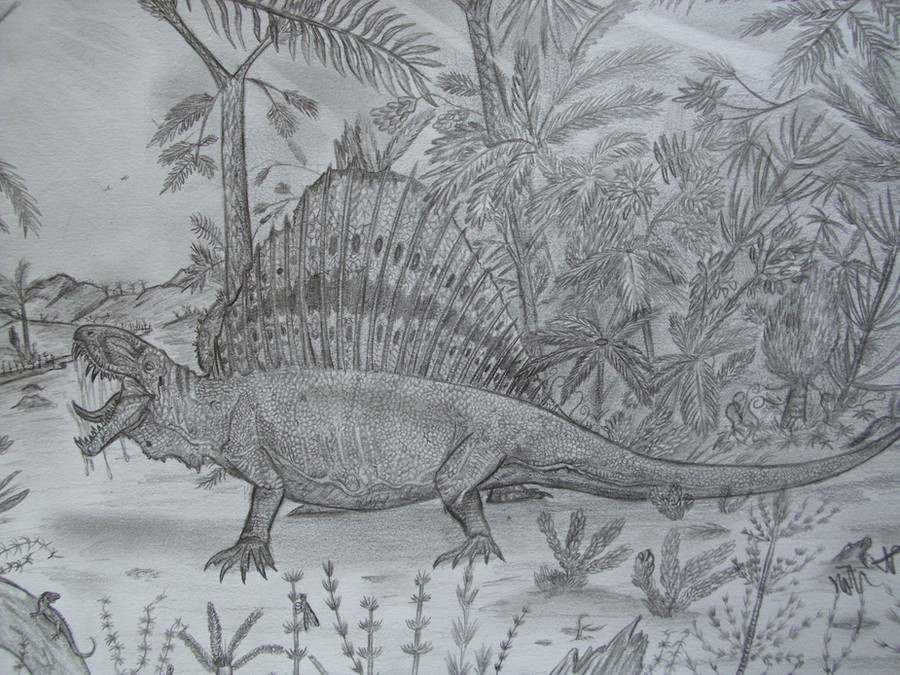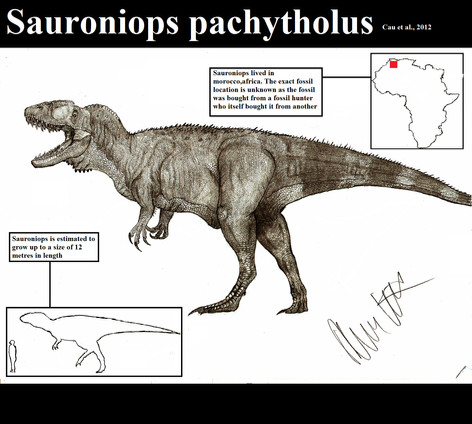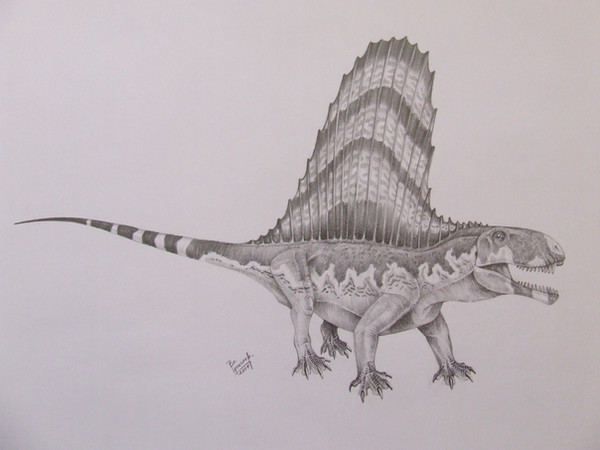HOME | DD
 Teratophoneus — Dimetrodon limbatus
Teratophoneus — Dimetrodon limbatus

Published: 2011-08-21 14:24:36 +0000 UTC; Views: 4610; Favourites: 62; Downloads: 72
Redirect to original
Description
A new morning, 270 million years ago, early perm: The first sunshines are breaking throughthe vegetation, and wake up a big, adult, male Dimetrodon limbatus. The big pelycosaur, yawns and moves its sail toward the sun to get his body warm and ready for hunting prey. Dimetrodon was the biggest land predator of its time and his spectacular sail helped it to warm his body in the morning much faster than other reptiles. Dimetrodon ,which means two measures of teeth had 2 types of teeth: big and strong canines, and smallr teeth that were ideal for cutting. The biggest species of dimetrodon could grow up to 3,5 metres in length and had a weight of ca 250 kg. Dimetrodon was a fierce carnivore and was present in many areas of the planet.This is so far my best picture, it has so many badass looking details like the many plants, the little scales on the dimetrodon and the little lizard in the left corner. The dimetrodon is anatomically correct drawn , I even counted every single spine to make the sail structure acurate. Unfortunately the skeleton I used as reference didnt show the secies name but the shape of the sail looked like that of D. limbatus.
Related content
Comments: 14

Hallo,
das Bild ist zwar in der Gruppe Origin of Mammals "expired" aber ich möchte trotzdem einen Kommentar dazu geben:
An sich eine gute, schöne und auch detallierte Arbeit. Leider sind die Kiefern, auch wenn er gähnt, unnatürlich weit geöffnet, was dem ganzen (zusätzlich zur extremen Speichelproduktion) einen eher unnatürlichen Ausdruck verleiht. Schädel, Körper und Segel sind aber ansonsten sehr akkurat.
Im Schulterbereich sieht man aber bei dir nur die hervortretende Scapula, wo eher Muskeln zu sehen sein sollten. Die Stellung der Extremitäten hast du, glaube ich, zwar versucht zu zeichnen, zeichnerisch fehlt es da aber an Tiefe und die Perspektiven sind ein bisschen durcheinander geraten, hier mal ein Dimetrodon limbatus von DiBgd zum Vergleich: [link]
Zu den Schuppen: Ich glaube dir, dass es eine Heidenarbeit war, aber es gibt meines Wissens keine fossile Grundlage dafür dass Pelycosaurier überhaupt Schuppen entwickelt hatten. Synapsiden hatten eher glattere Haut, das sieht man an Hautabdrücken von Ophiacodon.
👍: 0 ⏩: 0

Dude this is too detailed! How much time you think you drawn this?
👍: 0 ⏩: 1

i think it was about 10 hours.
👍: 0 ⏩: 1

You are simply a genius!
👍: 0 ⏩: 1

thank you very much
👍: 0 ⏩: 1

Very good attention to detail, the only advice i would give is to darken up the dimetrodon a bit, it would make it stand out and pop more.
👍: 0 ⏩: 0
































